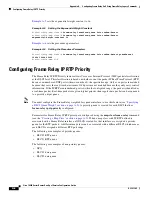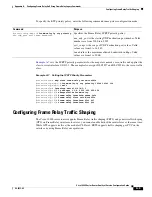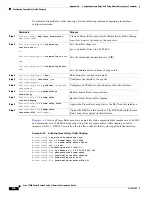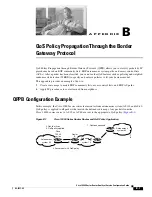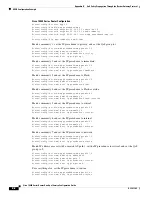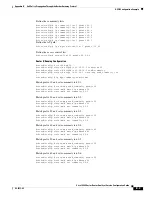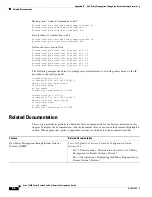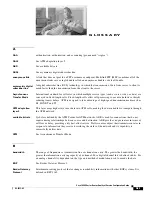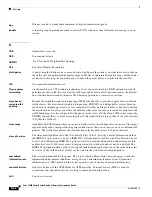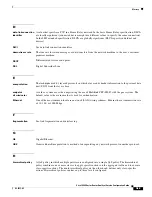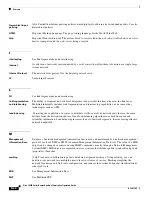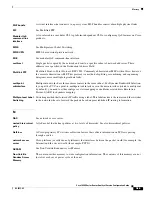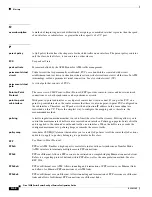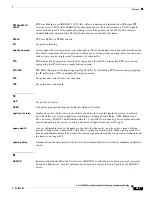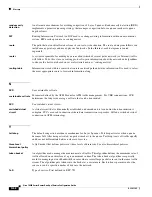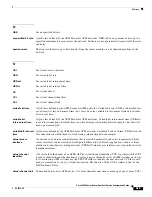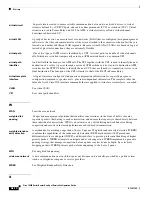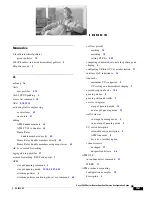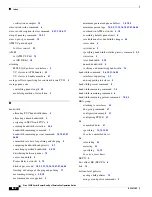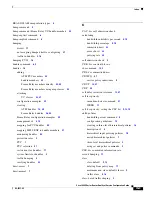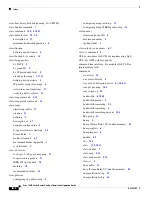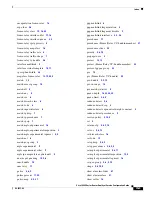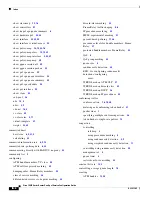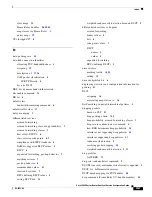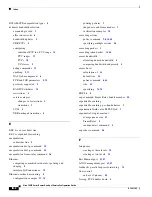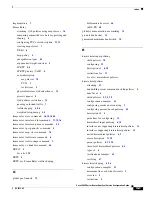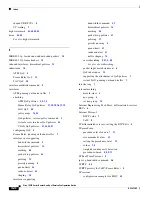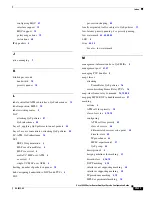
Glossary
GL-8
Cisco 10000 Series Router Quality of Service Configuration Guide
OL-7433-09
random early
detection
An alternative mechanism for avoiding congestion of Layer 3 queues. Random early detection (RED)
implements a proactive queuing strategy that manages congestion before a queue reaches its queue
depth or limit.
RIP
Routing Information Protocol. An IGP used to exchange routing information within an autonomous
system, RIP uses hop count as a routing metric.
route
The path that network traffic takes from its source to its destination. The route a datagram follows can
include many gateways and many physical networks. In the Internet, each datagram is routed
separately.
router
A system responsible for making decisions about which of several paths network (or Internet) traffic
will follow. To do this, it uses a routing protocol to gain information about the network and algorithms
to choose the best route based on several criteria known as “routing metrics.”
routing table
Information stored within a router that contains network path and status information. It is used to select
the most appropriate route to forward information along.
S
SCR
See sustainable cell rate.
sustainable cell rate
Parameter defined by the ATM Forum for ATM traffic management. For VBR connnections, SCR
determines the long-term average cell rate that can be transmitted.
SVC
See switched virtual circuit.
switched virtual
circuit
A virtual circuit that is dynamically established on demand and is torn down when transmission is
complete. SVCs are used in situations where data transmission is sporadic. Called a switched virtual
connection in ATM terminology.
T
tail drop
The default congestion avoidance mechanism for Layer 3 queues. Tail drop activates when a queue
becomes full. After being activated, no packets make it to the queue. Tail drop treats all traffic equally
and does not differentiate between classes of service.
three-level
hierarchical policy
A QoS model that defines policies at three levels of hierarchy. See also hierarchical policies.
token bucket
An algorithm used o manage the maximum rate of traffic. This algorithm defines the maximum rate of
traffic allowed on an interface at a given moment in time. The token bucket algorithm is especially
useful in managing network bandwidth in cases where several large packets are sent in the same traffic
stream. The algorithm puts tokens into the bucket at a certain rate. Each token is permission for the
source to send a specific number of bits into the network.
ToS
Type of service. First defined in RFC 791.

